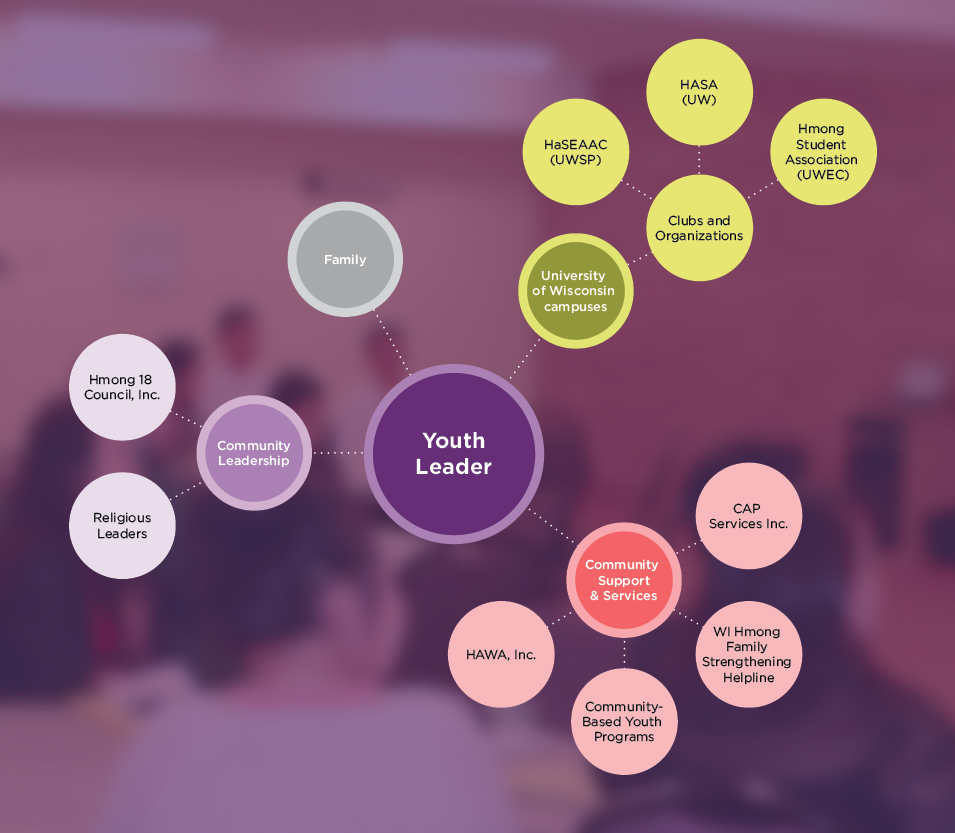Translocal Tomorrows: A Case Study
Juxtaposing Continuities, Identities, and Belonging to Empower and Mobilize Hmong Youth in America
Collaborative thesis research conducted with Hmong diaspora communities in Wisconsin and Canada. Harnesses design-led research and participatory methods to create open-source workshop tools for Hmong American youth. Co-create action plans that enable, support, and amplify existing translocal mobilization strategies within and across diaspora communities.
TEAM: Winnie Chang and Ker Thao
ROLE: design researcher, design strategist, facilitator, conference speaker and panelist
PARTNERED WITH: Hmong and South East Asian American Club (HaSEAAC), UWSP
OVERVIEW
Translocal Tomorrows is a collaborative, design-led research project to create tools that enable, support, and amplify alternate, translocal mobilization strategies. Using Hmong diaspora populations as a case study, we want to better understand how design can facilitate translocal narrative-building as pathways to mobilization. As one of the project objectives, this work explicates the ways in which communities can infrastructure new models for cultural co-existence; raise new inquiries into what constitutes “healthy” immigration; demonstrate the roles that mobility play in today’s world; and emphasize the need to build cultural understanding as a precursor to empathy for the “other.”
This is a three-part initiative that includes: (1) externalizing the Hmong narrative through audio and visual multimedia work; (2) creating open-source collective visioning tools to allow for social dreaming, aspirations, and frictions to come to the surface for productive community conversations; and (3) a digital platform which archives not only the past, but possible futures and action plans across borders in Hmong diaspora communities. As one of the objectives of this work, we want to showcase a snapshot of the diverse narratives present within Hmong diaspora populations in Canada, the United States, and Southeast Asia. Through an alternate lens, this work, therefore, challenges how migration, mobility, and displacement are framed and discussed in greater social and political discourse by demonstrating how it manifests on a human scale.

PROCESS
PRIMARY RESEARCH
We took a multi-modal research approach in order to better understand the community we worked with. We conducted semi-structured interviews, soundscape crowdsourcing, participant observation, video ethnography, online surveys, futuring workshops, and a comparative case study. We took this approach to crystallize the results and reveal a more nuanced, multifaceted, layered, yet partial snapshot of their everyday lives. We acknowledged that our findings, within a limited time-frame, would only capture a small aspect of a larger whole.
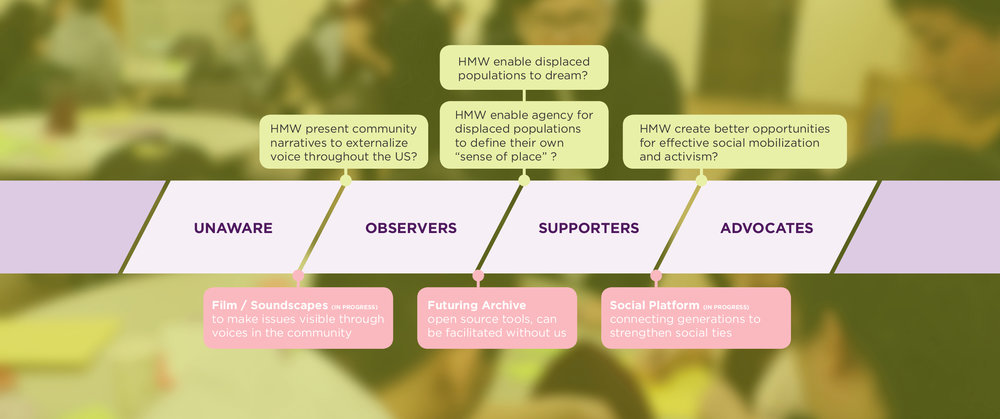
CHALLENGE MAPPING: UNDERSTAND OPPORTUNITY SPACES
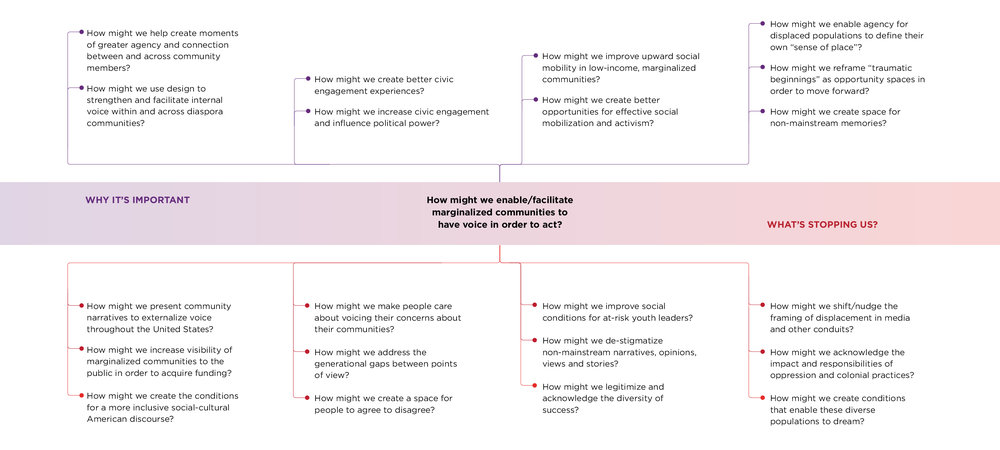
KEY PLAYERS IN YOUTH MOBILIZATION EFFORTS
DESIGN APPROACH
METHODOLOGY
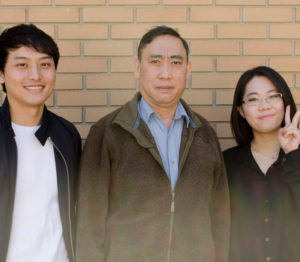
Semi-structured Interviews
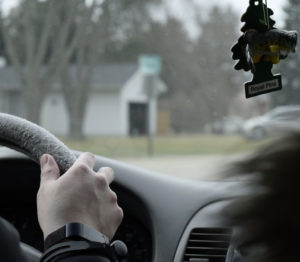
Crowdsourced Landscapes

Participant Observation

Video Ethnography

Online Surveys

Futuring Workshop
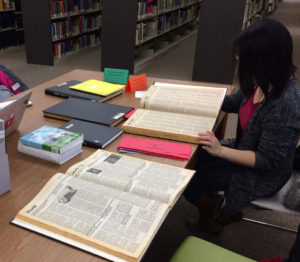
Comparative Case Study
DESIGN APPROACH
PROTOTYPES
Futuring Workshop
Pulling from their vibrant visual culture, we developed a visual language for the materials in terms of color schemes, symbols, and icons.
We conducted the workshop twice during the HaSEAAC conference, with approximately 25 participants in each session. In the first meeting, we took a very organic approach, letting the groups drive the conversations with less guidance. After realizing that there needed to be more facilitation, we iterated on our workshop structure to develop a more intimate conversation that enabled better collective group building and collaboration in the second session.

STRIVE
Based on the results of our research as well as the additional insights we gained from validating our research findings, we iterated on the materials of our futuring workshop so that they would be widely accessible, easy to use without expert facilitation, and adaptable to the needs of the individuals or groups using them.
The final pdf files that we have made available online include the
following components:
- Facilitation guide for non-experts
- Guided workbook for participants
- Printable templates for the diorama, backdrops, and props
- Customizable materials checklist
- Example photos of prepared and customized tools
These materials aim to support the following infrastructuring processes:
Short-term
- Act as a diagnostic to understand the current state of the community
- Begin scaffolding action plans and enable greater capacity for self-organization
- Introduce basic practices for productive conflict management/juxtaposition of different points of view
Long-term
- Cultivate a culture of forward-thinking
- Collaboratively create strategies to discuss systemic issues anddevelop ongoing, long-term relationships with other communities
- Promote a mindset shift towards proactively tackling issues that impact the community and beyond
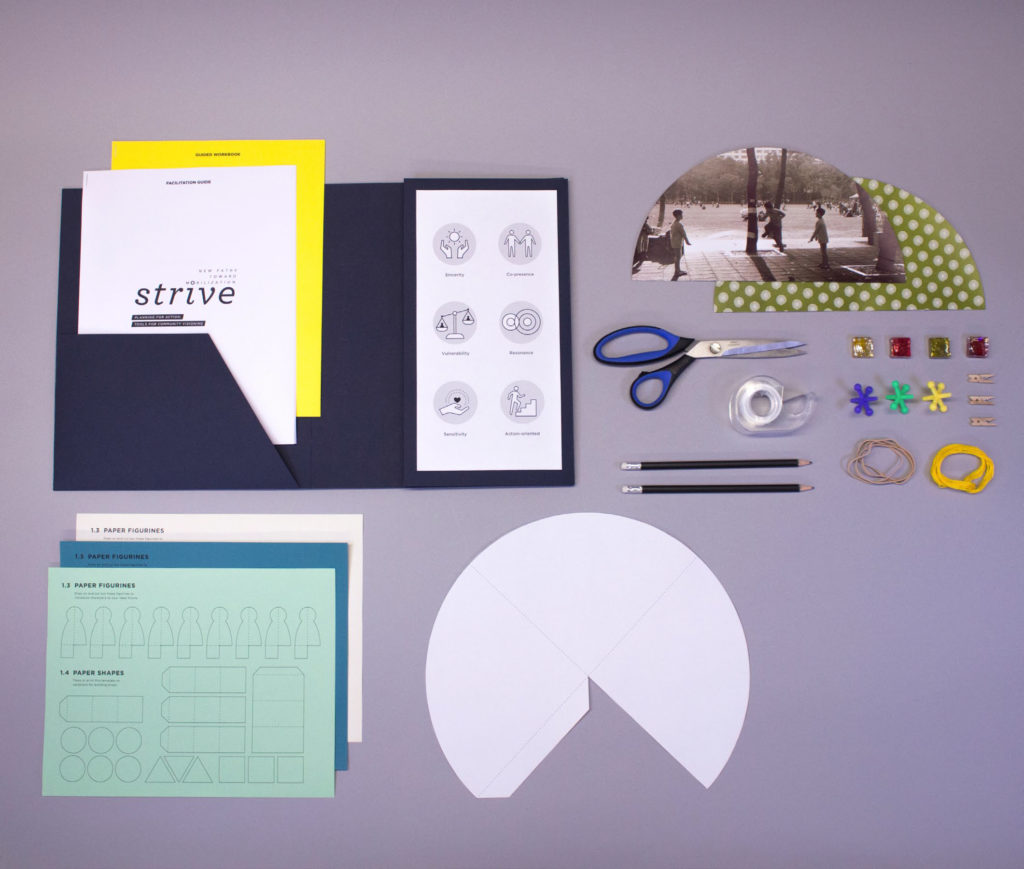

IMPACT

The project is currently seeking additional funding to further expand the research into Southeast Asia. Using the insights from this case study, we are exploring transferable resilience strategies for other marginalized populations who are facing similar challenges. With this initiative, it is with hope that we can begin to understand how we can begin to aid and provide analogous communities with tools to empower and give voice, so their stories can be heard. On the other hand, it is to amplify the voices of underrepresented communities towards pathways to acceptance against xenophobia in today’s ever-transient world. As we continue our work, we plan on disseminating our findings across both design and academic communities, in hopes of modelling a more socially just and ethical way of conducting design-led research.
FEATURE IN:
HaSEAAC 2017 Spring Conference (Stevens Point, WI)
VergeNYC 2017 Conference (New York, NY)
Bedford+Bowery (online)
TRANSDISCIPLINARY Design Thesis 2017
Parsons School of Design (online)



